Plantation Teak Wood
- September 14, 2023
- 0 comment

Plantation Teak Wood, scientifically known as Tectona grandis, hails from the lush tropical regions of South and Southeast Asia, including countries like India, Indonesia, and Myanmar. To meet the global demand for this prized hardwood, it is often cultivated in managed plantations, ensuring a sustainable and controlled supply. Teak wood stands out due to its remarkable attributes, such as unrivaled durability, innate resistance to decay and pests, and captivating grain patterns. These qualities make it a cherished choice among wood enthusiasts and craftsmen alike.
Texture
Teak wood exhibits a finely textured surface, falling within the fine to medium range. This texture lends an air of sophistication to the wood, accentuating its smooth and polished appearance. This fine texture, combined with the wood’s natural beauty, contributes to its popularity in high-end woodworking projects and furniture crafting.

Furniture
Plantation Teak Wood enjoys a well-deserved reputation for its exceptional suitability in furniture making, especially for outdoor and patio furniture. Its inherent resistance to moisture and pests ensures that teak furniture maintains its integrity and beauty even when exposed to the elements, making it a sought-after choice for those seeking enduring elegance.

Weapon
Historically, teak wood was prized for crafting weapons, such as spears and knife handles, thanks to its innate strength and durability. However, in modern times, teak wood’s application in weaponry has largely given way to more suitable materials.
Plantation Teak Wood
Firewood
Teak wood is not commonly utilized as firewood. Its relative scarcity and slow growth rate contribute to its high cost, making it less practical for burning. Rather, teak wood’s value primarily resides in its superb timber quality.

Construction
Teak wood finds widespread use in construction, especially in regions where it is abundant and cost-effective. It is frequently employed for essential structural elements like beams, posts, and framing, thanks to its robustness and capacity to withstand harsh environmental conditions, thus enhancing the durability of structures.
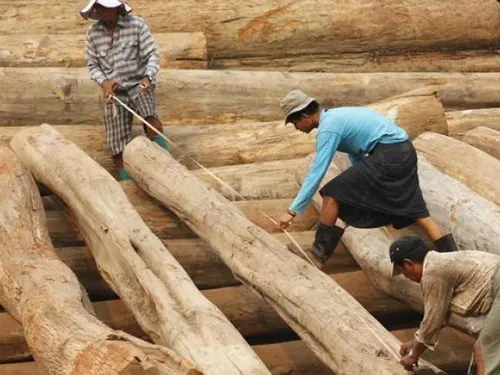
Board
Teak boards are versatile and feature prominently in various woodworking projects, including cabinetry, flooring, and wall paneling. Its captivating appearance and resilience make it a favored choice for interior applications that require both aesthetics and endurance.
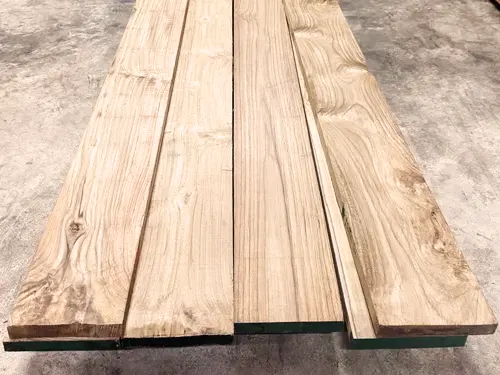
Railroad Cross Ties
While teak wood possesses admirable properties, it is not commonly chosen for railroad crossties in most regions due to its higher cost compared to other hardwoods like oak or pine, which are more economically viable for this purpose.
Pallet
Teak wood is rarely selected for pallet construction, primarily due to its elevated cost. Pallets are more commonly crafted from wood options that are more budget-friendly.
Fencing
Teak wood can be employed for decorative fencing, particularly in upscale settings where its innate beauty and resistance to decay are cherished. Its use in fencing adds a touch of elegance to outdoor spaces.
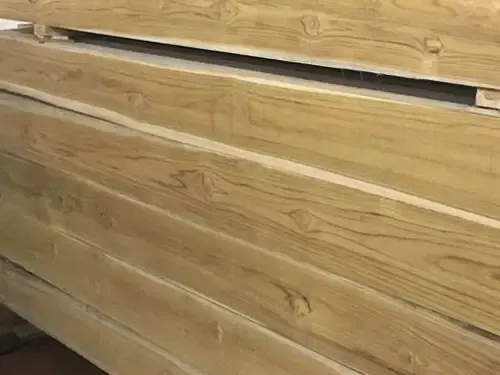
Wood Decking
Teak wood is a preferred choice for decking material, especially in outdoor settings such as decks and patios. Its resistance to decay and pests makes it an ideal option for areas exposed to the elements, ensuring longevity and aesthetics.
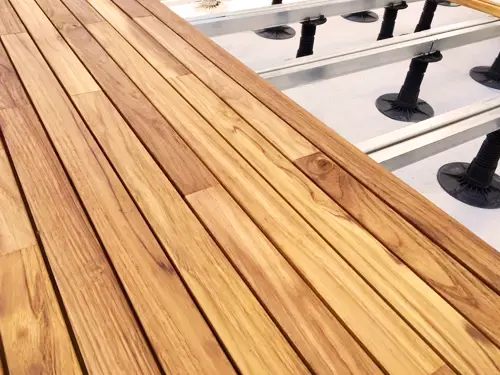
Live Edge Siding
Live edge siding fashioned from teak wood serves as a unique and rustic exterior cladding for buildings or interior design accents. The “live edge” aspect refers to the retention of the wood’s natural and irregular edge, imbuing character and authenticity into architectural and decorative applications.
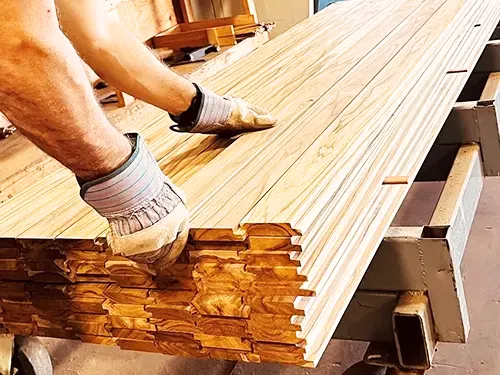
Beams
Teak wood beams are indispensable in construction and architectural projects that demand both strength and aesthetics. Whether utilized as essential structural elements or for decorative purposes, teak wood beams showcase the wood’s enduring beauty and robustness, enhancing the overall quality of buildings and designs.
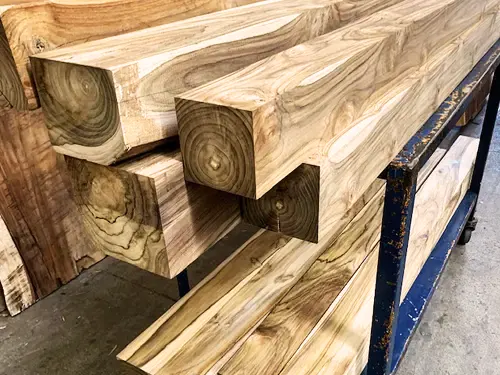
You can check our Lumber Section for an even more comprehensive look into the world of wood and its countless applications. There’s a wealth of knowledge waiting for you there, so dive right in and embark on your next enlightening read. Happy Reading!
FAQs
- What makes Plantation Teak Wood so valuable compared to other hardwoods?
Plantation Teak Wood is highly valued due to its exceptional durability, resistance to decay and pests, and its beautiful grain patterns. It’s also prized for its versatility, making it suitable for a wide range of applications. - Is teak wood from plantations sustainable?
Yes, teak wood from well-managed plantations is considered sustainable. These plantations follow responsible harvesting practices, replant trees, and maintain healthy ecosystems, ensuring a continuous supply of teak without depleting natural forests. - How does teak wood’s color change over time?
Teak wood starts with a golden or honey-brown color when freshly cut. Over time and with exposure to light and air, it gradually matures into a silvery-gray patina, which is often appreciated for its naturally weathered look. - Can teak wood be used for indoor furniture as well as outdoor furniture?
Yes, teak wood is suitable for both indoor and outdoor furniture. Its resistance to moisture and insects makes it an excellent choice for outdoor settings, while its natural beauty and durability make it ideal for indoor furniture too. - What maintenance is required for teak outdoor furniture?
Teak outdoor furniture can be left to weather naturally, or you can choose to maintain its original color by applying teak oil or sealers. Regular cleaning to remove dirt and debris is recommended. - Why is teak wood preferred for boat building?
Teak wood’s resistance to water, rot, and decay, along with its strength and stability, make it an excellent choice for boat decks and interiors. It can withstand the harsh marine environment. - Is teak wood endangered due to overharvesting?
While teak wood from natural forests is at risk of overharvesting, plantation-grown teak is a sustainable alternative. Responsible forestry practices help ensure the conservation of this valuable resource. - Can teak wood be used for flooring in high-traffic areas?
Yes, teak wood is a suitable choice for high-traffic areas due to its durability. It’s often used for flooring in homes, commercial spaces, and even in some public buildings. - What are some alternatives to teak wood for outdoor decking?
Cedar, redwood, and tropical hardwoods like ipe are alternatives to teak for outdoor decking. While they have different characteristics, they can also provide durability and aesthetics. - How can I tell if teak furniture is made from genuine teak wood?
Authentic teak furniture should have the wood type clearly identified in its product description or label. Additionally, teak wood has a unique grain pattern and is heavy and dense to the touch. - Is teak wood suitable for DIY woodworking projects?
Yes, teak wood is a popular choice for DIY projects. Its workability and attractive appearance make it a favorite among hobbyists and woodworking enthusiasts. - Can teak wood be stained or painted?
While teak wood is often left natural or oiled to preserve its appearance, it can be stained or painted if desired. However, many people prefer to showcase its natural beauty. - What is the typical lifespan of teak wood furniture or decking?
Properly maintained teak wood furniture and decking can last for decades, often surpassing the lifespan of other materials. Some teak furniture can even be passed down through generations. - Is teak wood more expensive than other hardwoods?
Yes, teak wood is generally more expensive than many other hardwoods due to its unique qualities, limited availability, and the cost associated with sustainable harvesting practices. - Are there any ecological benefits to planting teak trees?
Yes, teak plantations can have positive ecological impacts, such as carbon sequestration, soil conservation, and providing habitat for wildlife. Well-managed plantations contribute to a healthy environment.
In conclusion, Plantation Teak Wood stands as a testament to the enduring beauty and versatility of nature’s treasures. With its remarkable durability, resistance to decay, and captivating grain patterns, teak wood has earned its place as a cherished hardwood in the world of woodworking and construction. From the exquisite craftsmanship of indoor furniture to the rugged resilience of outdoor decking, teak wood adapts seamlessly to a multitude of applications. Its sustainable cultivation in well-managed plantations ensures a responsible approach to harnessing its potential, preserving this invaluable resource for future generations. As you explore the possibilities of this remarkable wood, remember that its story is one of craftsmanship, sustainability, and timeless elegance, offering you the opportunity to create enduring pieces and spaces that stand the test of time.






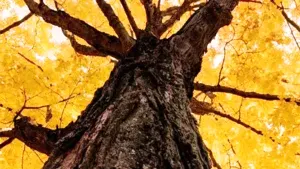
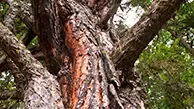





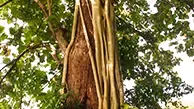
Leave your comment